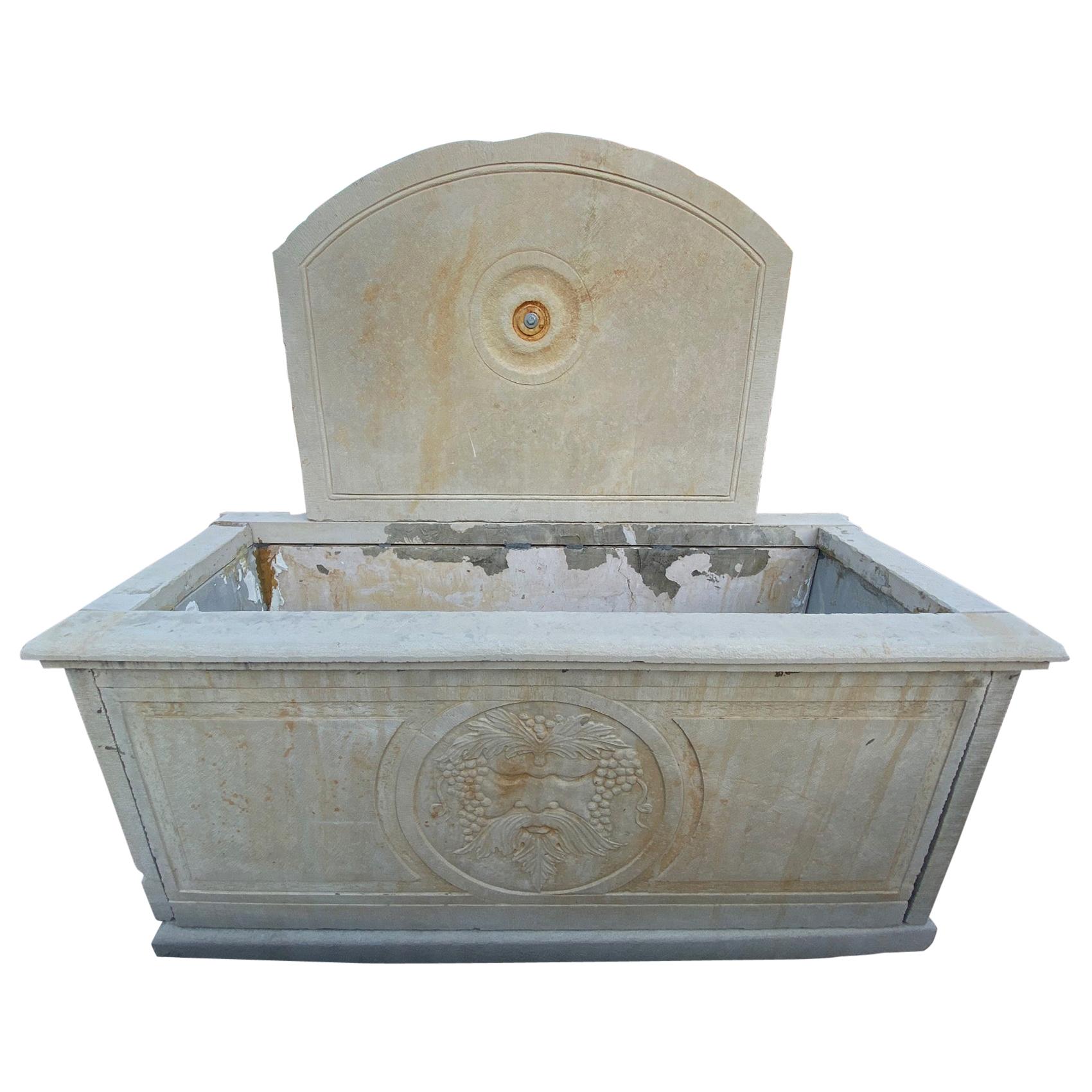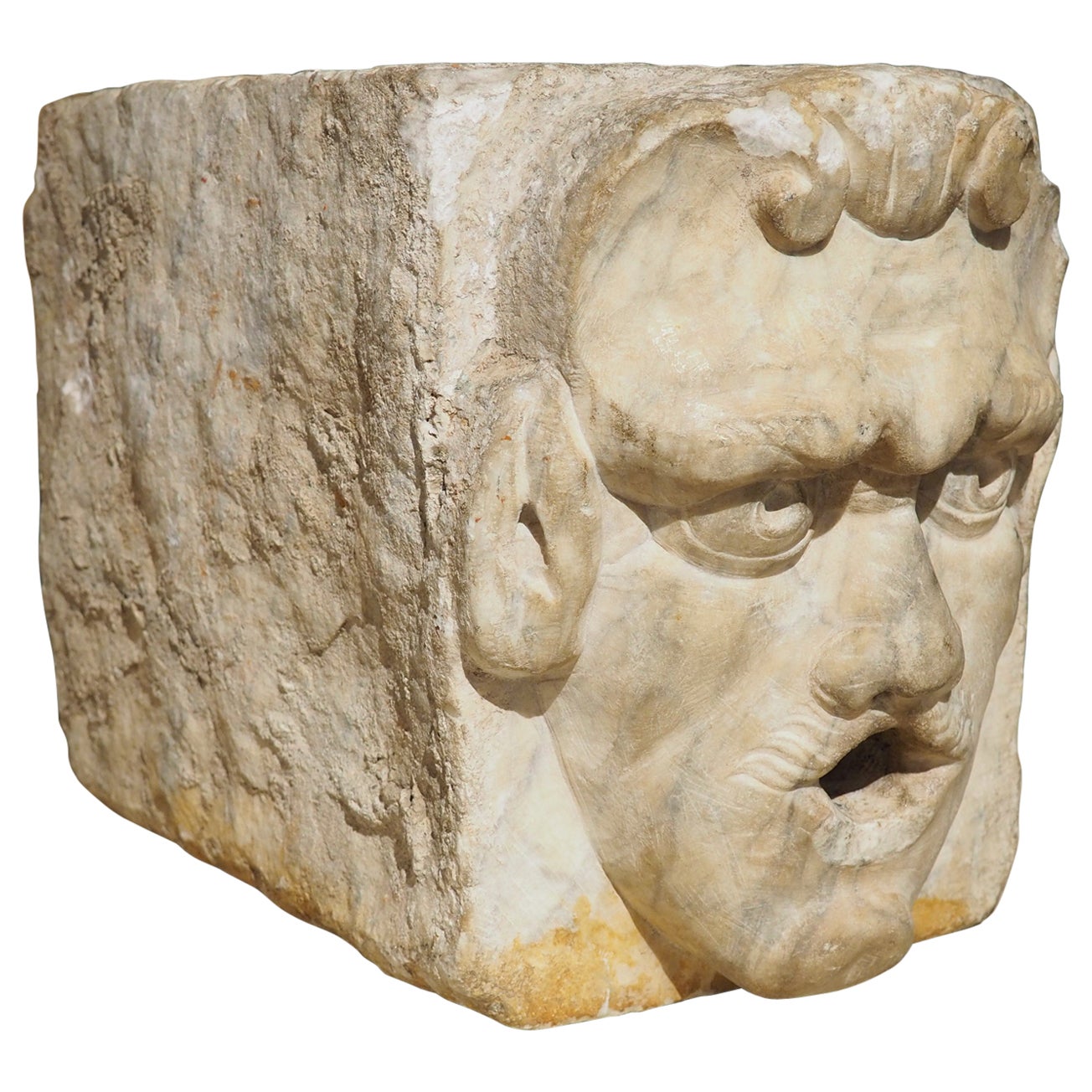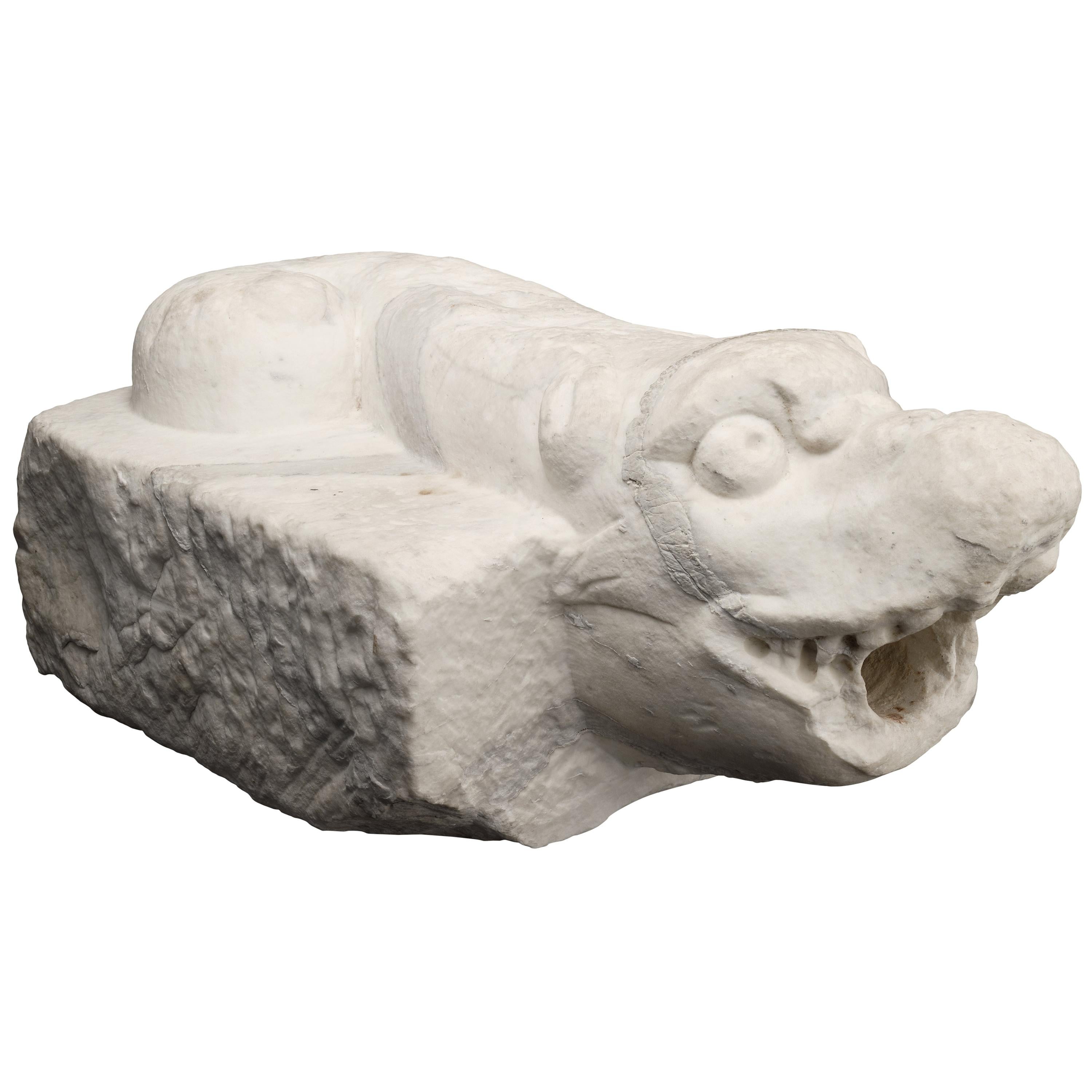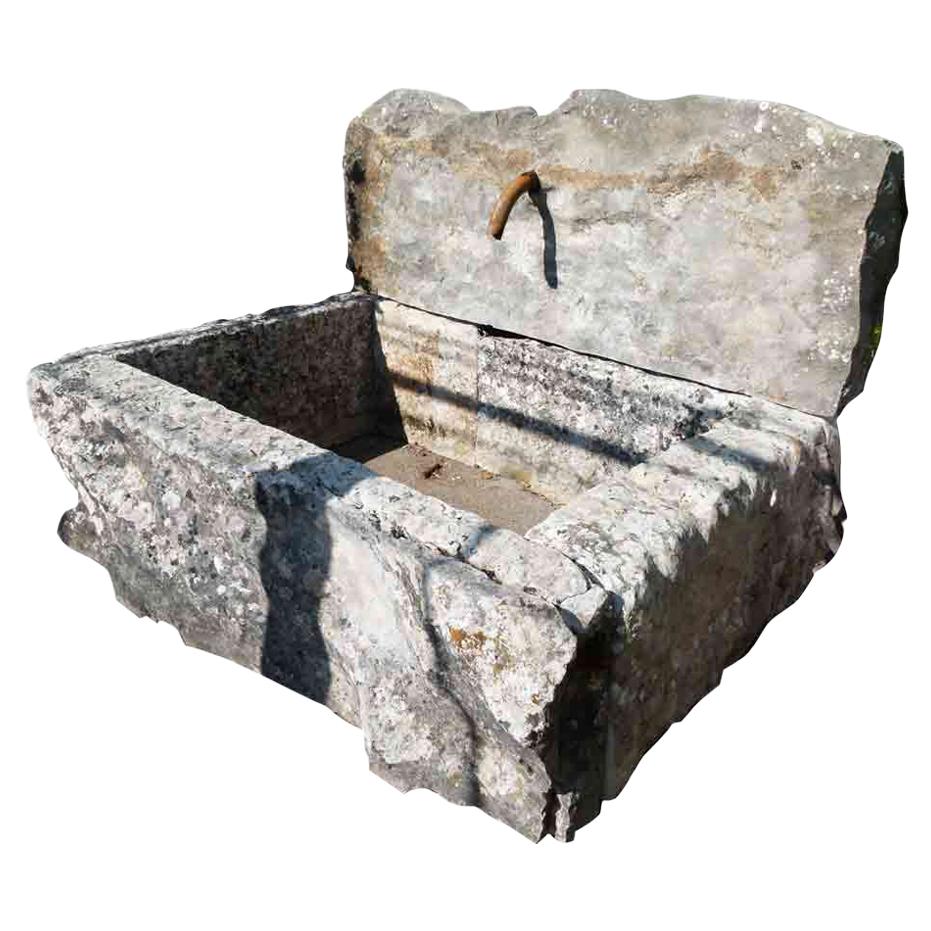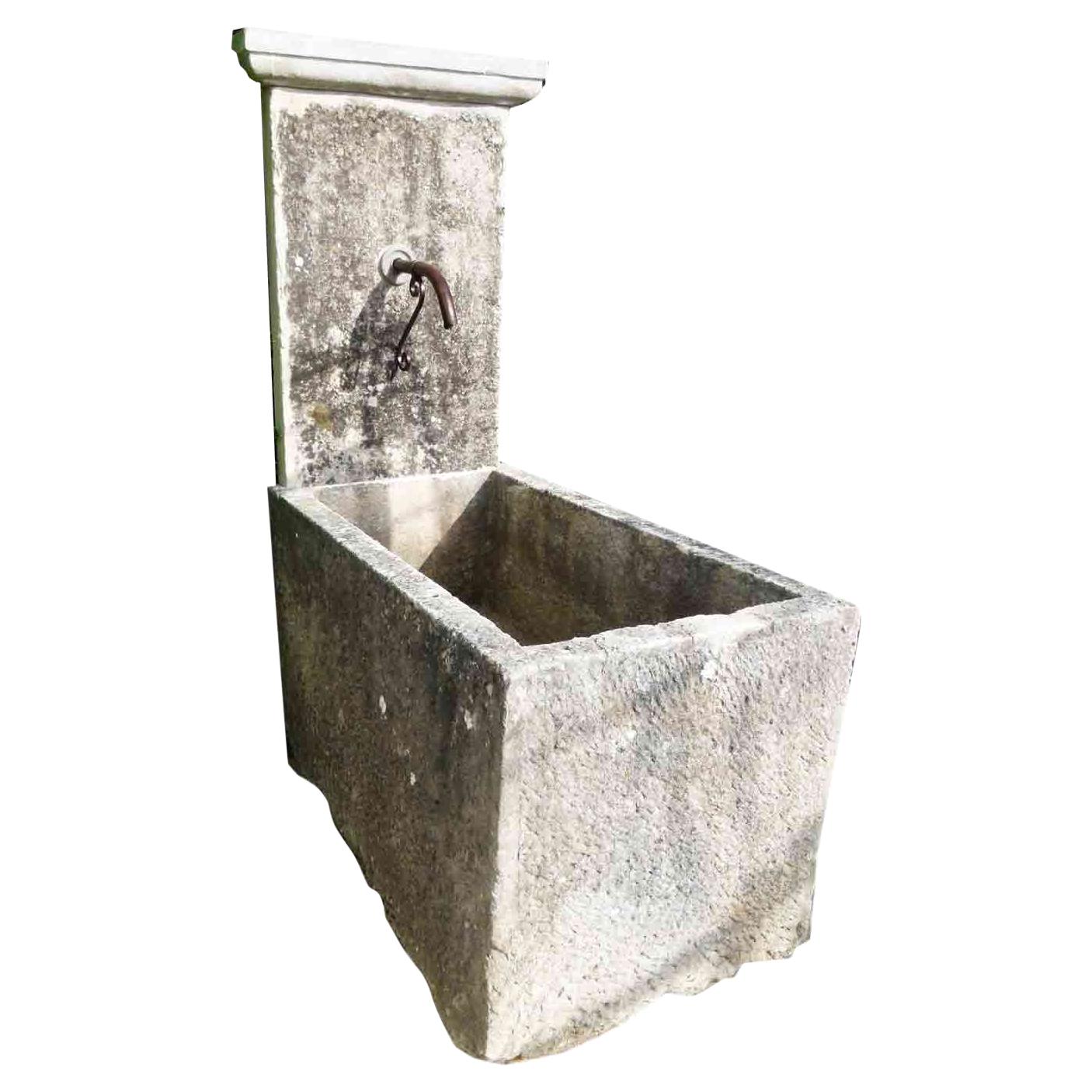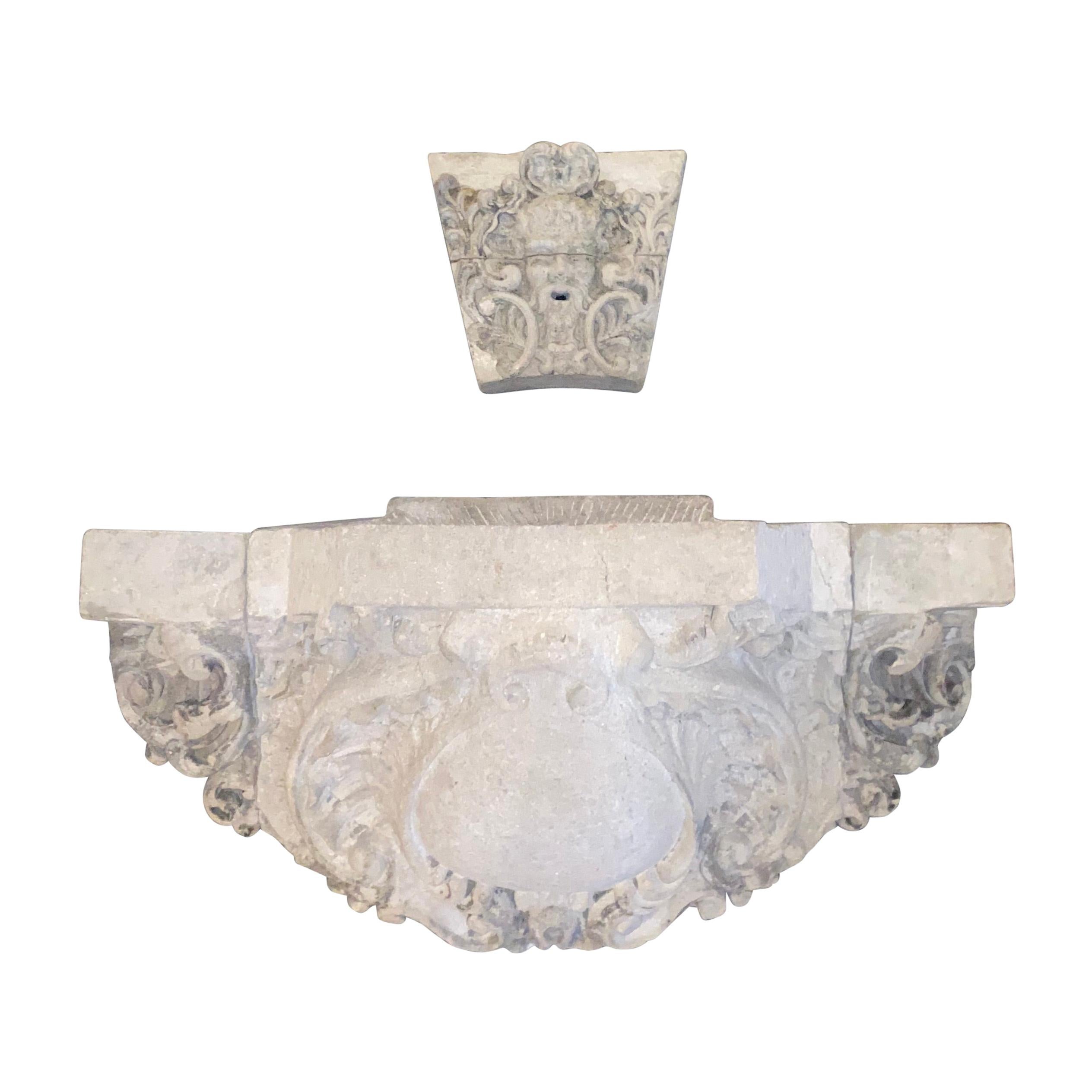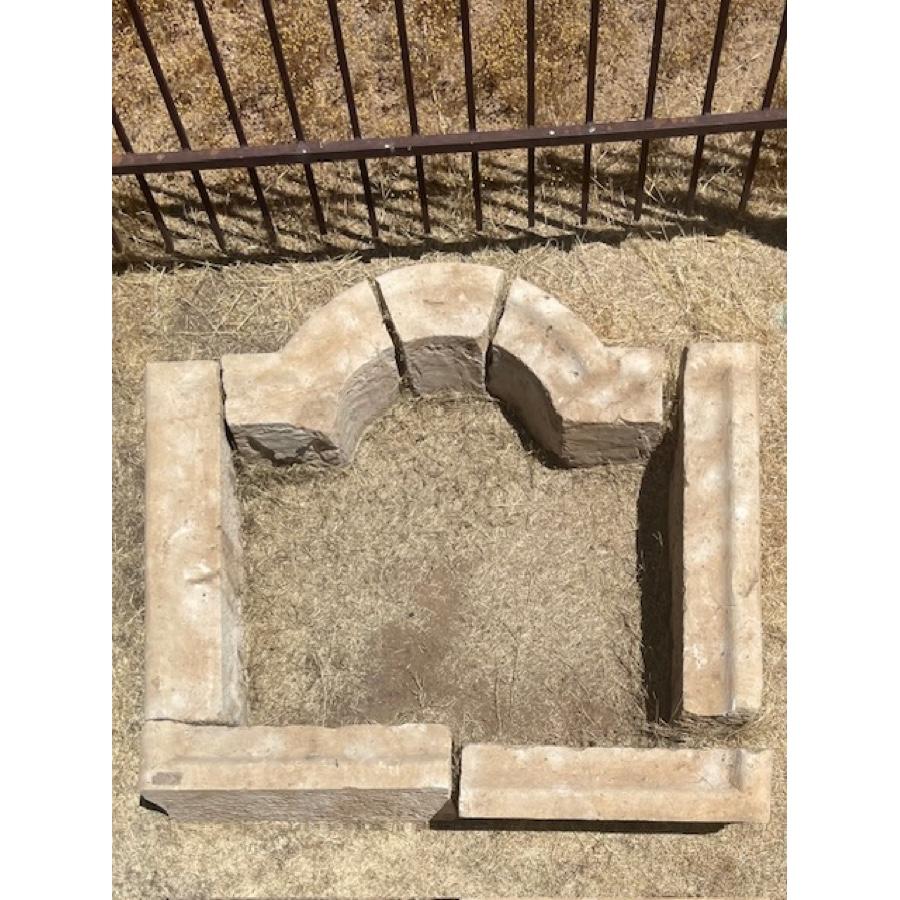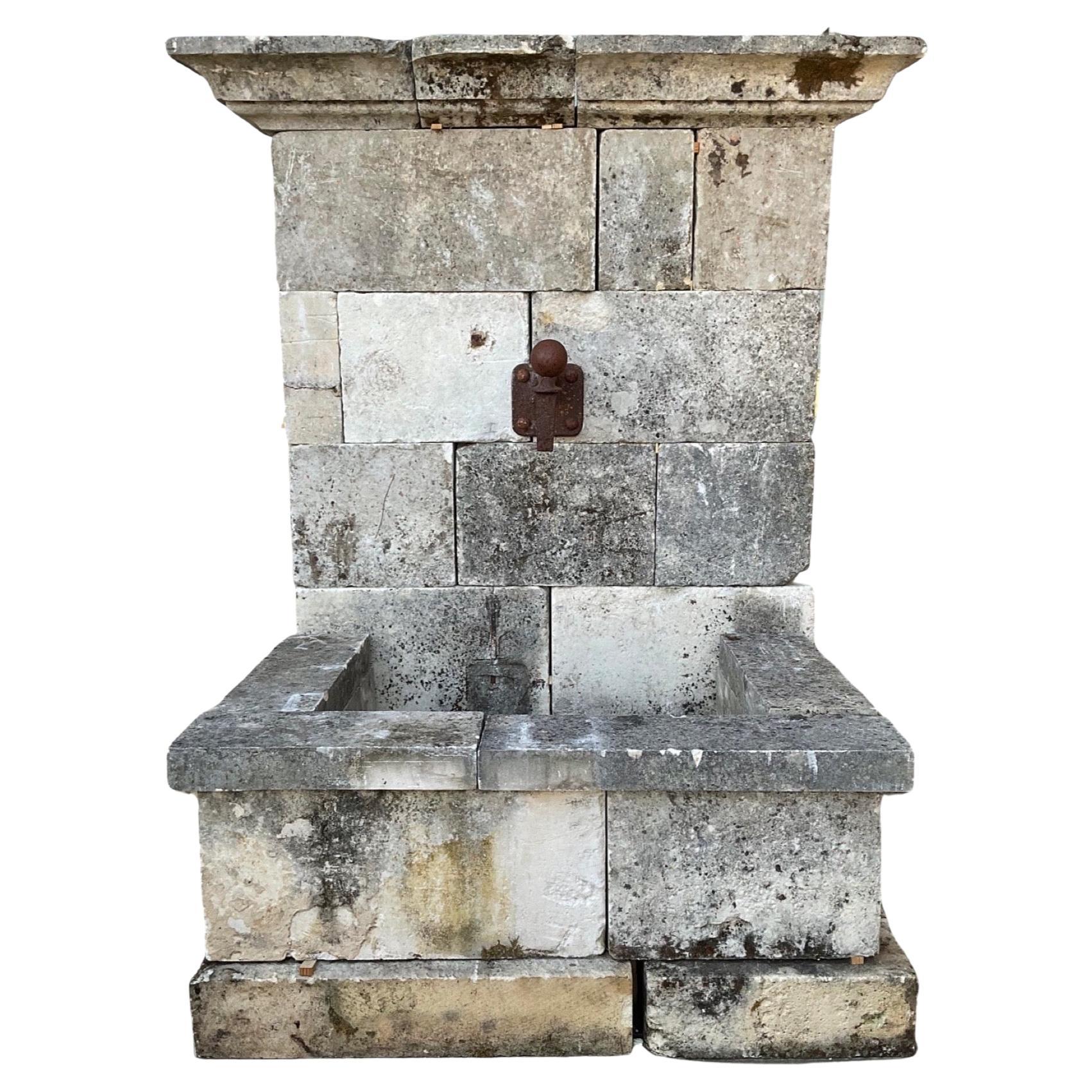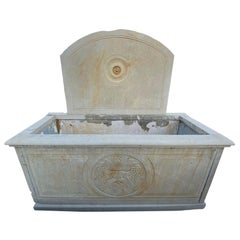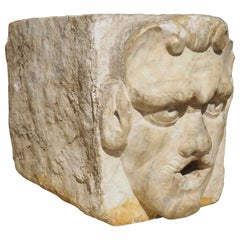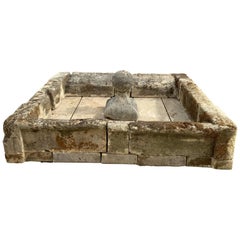
16th Century Limestone Fountain from the Bordeaux Region
View Similar Items
Want more images or videos?
Request additional images or videos from the seller
1 of 6
16th Century Limestone Fountain from the Bordeaux Region
About the Item
- Dimensions:Height: 19.5 in (49.53 cm)Width: 87.5 in (222.25 cm)Depth: 82 in (208.28 cm)
- Materials and Techniques:
- Place of Origin:
- Period:
- Date of Manufacture:1580
- Condition:Wear consistent with age and use.
- Seller Location:Dallas, TX
- Reference Number:Seller: FO6081stDibs: LU937922425512
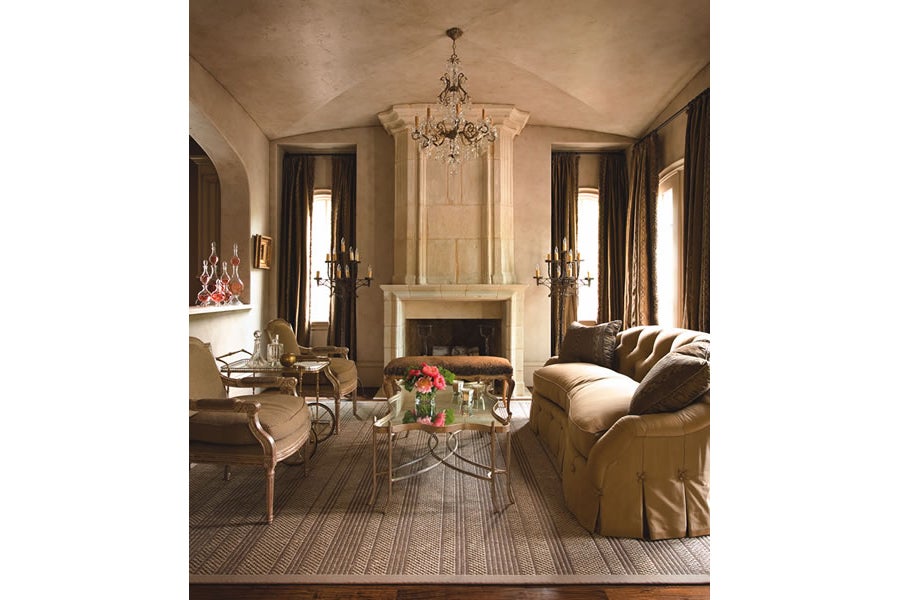
About the Seller
4.8
Gold Seller
These expertly vetted sellers are highly rated and consistently exceed customer expectations.
Established in 1990
1stDibs seller since 2012
599 sales on 1stDibs
Typical response time: 2 hours
More From This SellerView All
- 19th Century Limestone Fountain from ItalyLocated in Dallas, TXThis limestone fountain origins from Italy, circa 1880.Category
Antique 19th Century Italian Fountains
MaterialsLimestone
- Limestone Wall Fountain from FranceLocated in Dallas, TXThis limestone wall fountain origins from France. Contemporary manufacture.Category
21st Century and Contemporary French Fountains
MaterialsLimestone
- French Limestone FountainLocated in Dallas, TXThis rustic, antique French Limestone Fountain from 1890 is an architectural treasure. It adds substantial style to any outdoor space, creati...Category
Antique 18th Century Fountains
MaterialsLimestone
$17,160 - French Limestone FountainLocated in Dallas, TXThis French Limestone Fountain is a stunning addition to any garden. Made with a circular round style trough from 18th century limestone, this fountain naturally captivates with its ...Category
Antique Mid-18th Century Fountains
MaterialsLimestone
$11,440 - 18th Century Limestone Mantel from the Bordeaux RegionLocated in Dallas, TXThis limestone mantel origins from Bordeaux in France, circa 1780. Measurements firebox: 59.5" W x 58.25" H.Category
Antique 18th Century French Fireplaces and Mantels
MaterialsLimestone
- Limestone Sun Wall FountainLocated in Dallas, TXHere we offer a hand carved limestone wall fountain with a carving of the Sun with a human face. Louis XIV chose the sun as his emblem. The sun was associated with Apollo, god of pea...Category
21st Century and Contemporary French Fountains
MaterialsLimestone
You May Also Like
- Carved Limestone Fountain Mascaron Spout from the Gard Region of France, 20th CLocated in Dallas, TXHand-carved in the Gard region (a department in the South of France) during the 1900’s, this fountain mascaron spout depicts a heavily bearded man. The face, which has been carved in...Category
20th Century French Fountains
MaterialsStone, Limestone
- 15th or 16th Century Marble Gargoyle Fountain Spout from Arezzo, ItalyLocated in Dallas, TXAlthough when most people hear the word “gargoyle”, they probably envision small, winged creatures with grotesque visages. However, the phrase has a deeper meaning, encompassing any carved head (animal or human) that function as waterspouts. From the Early Renaissance (late 1400’s/early 1500’s), our gargoyle fountain spout features a human-like face with pointed ears, possibly representing a centaur or a satyr. The roughly rectangular block of marble was hand-carved in Arezzo, in the Tuscany region of Italy. All sides except the front of the cream-colored stone have a sawed finish, resulting in a rough texture. The back has been excavated, adding to the character of the gargoyle. A 1 ½” diameter hole has been cut all the way through, forming an open mouth of the gargoyle. The gaping mouth was often a symbol used to conjure images of devouring giants and used to remind people that they are susceptible to certain forces. Our 15th/16th century marble...Category
Antique 16th Century Italian Renaissance Fountains
MaterialsMarble
- Italian Ancient Marble Sculpture Fountain, Late 16th CenturyLocated in Milano, ITSea monster Carrara marble mouth fountain Italy, late 16th century It measures 13.8 x 31.5 x 18.9 in (35 x 80 x 48 cm) State of conservation: some small evident gaps and widespread signs of wear due to outdoor exposure. The gray marks crossing it do not come from restoration, but are rather the natural veins of the marble. This work has some morphological characteristics typically associated with the iconography of the sea monster: an elongated muzzle, sharp teeth, protruding eyes, elongated ears, and a coiled serpent's tail. An in-depth series of studies on artistic depictions of the sea monster attempted to verify how this symbol evolved in antiquity in the European and Mediterranean contexts and how it gradually changed its image and function over time. The iconography itself is mutable and imaginative and its history is rich with cultural and artistic exchange, as well as the overlapping of ideas. This occurred so much that it is difficult to accurately pinpoint the "types" that satisfactorily represent its various developments. However, we can try to summarize the main figures, starting from the biblical Leviathan and the marine creature that swallowed Jonah (in the Christian version, this figure was to become a whale or a "big fish", the “ketos mega”, translation of the Hebrew “dag gadol”). Other specimens ranged from the dragons mentioned in the Iliad (which were winged and had legs) to "ketos” (also from Greek mythology), the terrifying being from whose Latinized name (“cetus”) derives the word "cetacean". See J. Boardman, “Very Like a Whale” - Classical Sea Monsters, in Monsters and Demons in the Ancient and Medieval Worlds, in Papers presented in Honor of Edith Porada, Mainz am Rhein 1987, pp. 73-84). In Italy the monster underwent yet further variations: it can be found in Etruscan art on the front of some sarcophagi representing the companion of souls, while among the Romans we find the “Pistrice” (cited by Plinio in Naturalis Historia PLIN., Nat., II 9, 8 and by Virgilio in Eneide: VERG., Aen., III, 427), which appeared in the shape of a stylized hippocampus or a very large monstrous cetacean and evolved into a hideous being with a dragon's head and long webbed fins. During the Middle Ages, the sea monster was the object of new transformations: at this time, it is often winged, the head is stretched like a crocodile, the front legs are often very sharp fins - sometimes real paws - until the image merges with dragons, the typical figures of medieval visionary spirituality widely found throughout Europe (on this topic and much more, see: Baltrušaitis, J., Il Medioevo fantastico. Antichità ed esotismi nell’arte gotica, Gli Adelphi 1997). In Italy during the 15th and 16th centuries, the revival of classicism - representative of the humanistic and Renaissance periods - led to a different reading of these "creatures". Indeed, the sea monster was also to find widespread use as an isolated decorative motif, especially in numerous fountains and sculptures where dolphins or sea monsters were used as a characterizing element linked to water (on this theme see: Chet Van Duzer, Sea Monsters on Medieval and Renaissance Maps, London, The British library, 2013). From the morphological point of view, the "sea monsters" of this period are mostly depicted as hybrid figures, in which the body of a mythological or real being (a hippocampus, a sea snake, a dolphin), is joined to a head with a rather indistinct appearance. It was usually characterized by large upright ears, an elongated snout, sharp teeth and globular, protruding eyes; a complex and indefinite figure, both from the symbolic point of view and from that of its genesis. The work we are examining is placed as a cross between the medieval sea serpent and the Renaissance dolphin, with stylistic features which recall the snake as often used in heraldry (such as the "snake" depicted in the coat of arms of the Visconti - the lords and then dukes of Milan between 1277 and 1447 - and which, for some, may be derived from the representations of the “Pistrice” that swallowed Jonah). In the search for sources, Renaissance cartography and in particular woodcuts should not be neglected. See for example the monsters of Olaus Magnus, from the editions of the “Historia de gentibus septentrionalibus” (“History of the peoples of the north”) and the natural histories of Conrad Gesner, Ulisse...Category
Antique 16th Century Italian Renaissance Animal Sculptures
MaterialsCarrara Marble
- 20th Century Assembled Fountain with Quaternary Limestone from PortugalLocated in Vulpellac, GironaThis fountain was assembled in the 20th century with 5 pieces of quaternary limestone from Portugal. The limestone shows severe signs of natural erosion that have taken place along t...Category
20th Century Portuguese Other Fountains
MaterialsLimestone
- 20th Century Assembled Fountain with Quaternary Limestone from PortugalLocated in Vulpellac, GironaThis fountain was assembled in the 20th century with quaternary limestone pieces from Portugal. The limestone shows signs of natural erosion that have taken place along the time. Thi...Category
20th Century Portuguese Other Fountains
MaterialsLimestone
- Large Limestone Wall Fountain from the Vaucluse, Provence FranceLocated in Dallas, TXHand carved in Vaucluse (Southeastern France), this majestic wall fountain is comprised of 22 pieces of Estaillade limestone. 16 Stones comprise the back wall, including the crown (t...Category
21st Century and Contemporary French Fountains
MaterialsLimestone, Stone, Iron, Wrought Iron, Metal
Recently Viewed
View AllMore Ways To Browse
From The Antique
From 16th Century
16th France
French 16th
16th Century French
16th French Furniture
16th Century French Furniture
Antique Bordeaux
French Limestone Fountain
West Hollywood Furniture
Used Furniture West Hollywood
Garden Spout
Patina Fountain
Antique Water Fountain
Antique Water Fountains
Antique Wall Fountain
Antique Wall Fountains
Fountain Top

